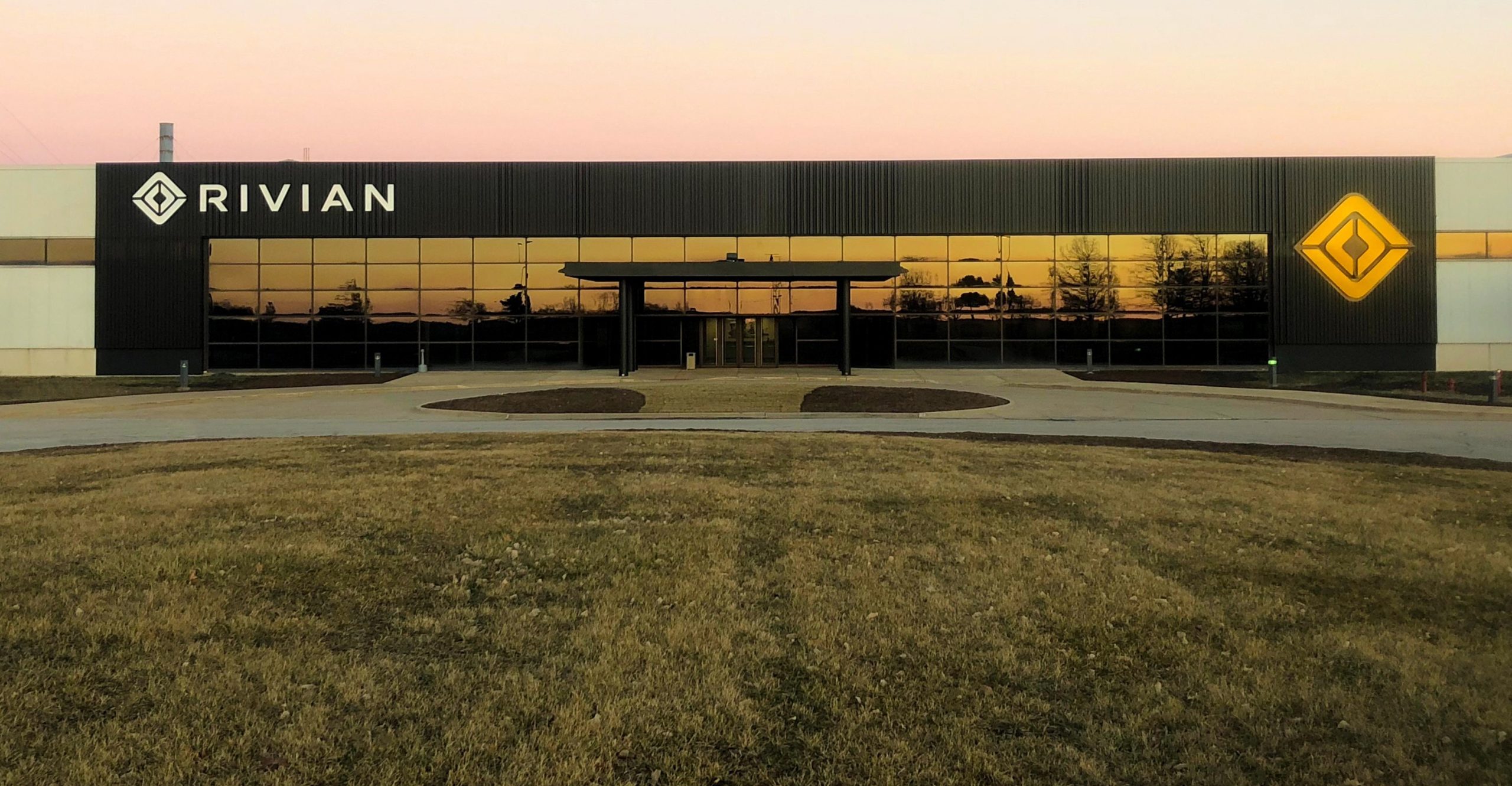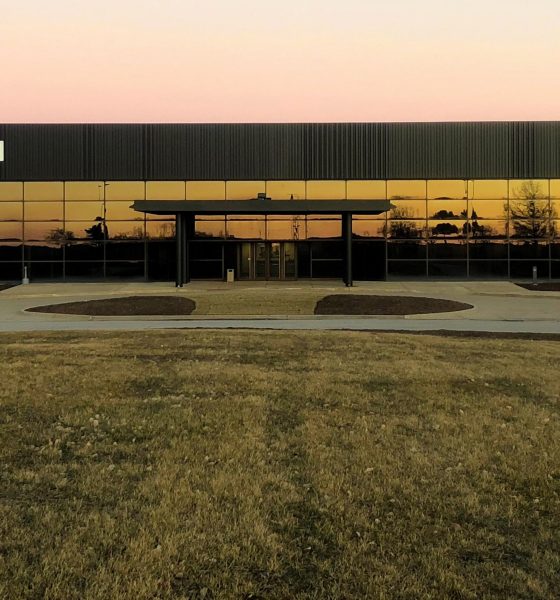

News
Rivian Motorway name change approved by city council despite opposition
The City Council of Bloomington, Illinois approved a motion last night to rename the highway where Rivian’s main manufacturing plant is located to Rivian Motorway. The road, which has parts located in both Bloomington and Normal, is currently named Mitsubishi Motorway after the prior owner of the facility. After some deliberation, the Council voted 7 to 2 to move forward with the requested name change.
Prior to the Bloomington Council’s meeting, the vote on the naming matter was expected to largely be a formality. However, one council member was decidedly against the motion. Donna Boelen, Alderwoman of Ward 2, objected over several concerns focused on the long-term ramifications of the move.
“Is this really in the best interest of the City of Bloomington and the region? It’s an unfortunate precedent that streets have been named after companies, and I would like to see that come to an end,” Boelen commented. “Rivian has two other operational entities, one in California, and one in Michigan… Rivian did not meet its incentive goal last year. They promised 1,000 employees over the next ten years, and that only means 100 per year.”
Along with casting doubts about Rivian’s long-term prospects in Illinois, Boelen further asserted that street names are free advertising that could deter future businesses from setting up shop nearby as there are several vacant lots near Rivian’s facility that could be developed.

Renaming Mitsubishi Motorway would also require local businesses to incur significant expenses, Boelen further claimed, citing one business owner’s quote of $5,000 to update their website and advertising materials with the new street name. This particular point caused a bit of debate among the members, specifically with regard to the amount cited.
“I have a really hard time understanding where a $5,000 total could possibly come from,” one member objected. “I mean, changing a website and changing the line to Rivian from Mitsubishi should take somebody like 5 minutes at the most… I think maybe he should have some serious conversations with his web developer at that point.” Mayor Teri Renner also added a comment about the overall street naming precedent in response to Boelen’s concerns. “It’s pretty common throughout the entire United States to name streets after major investors,” he said. “That is part of what some people think of as pro-business.”
The Town Council for Normal, where Rivian’s facility is actually located, had its own debate about the name change despite its motion ultimately being approved 4-2 in early July. Council member Stan Nord cited concerns about electronic databases adjusting to the temporary nature of businesses in the long term. Other members were not convinced that a problem existed, though, noting that new streets and street name changes were very common across the country.
Rivian specifically requested the name change earlier this year, according to a memo written by Assistant City Manager Eric Hanson to the Normal City Council. “Obviously, it’s not necessarily advantageous for them to bring (potential investors) down Mitsubishi Motorway,” he said. “ A second road for access to Rivian’s factory is also planned for renaming, citing the same reasons – Sakura Lane will be renamed Electric Avenue.
The nascent car maker bought their factory headquarters from Mitsubishi in 2017, and efforts are currently underway to transition to the electrified lineup they have in the works to include the R1T pickup truck and R1S SUV. Interestingly, many of the workers currently involved in Rivian’s changeover process were part of the original Mitsubishi team that opened the factory when it was new.
Rivian must gain one more approval from the McLean County Board before Rivian Motorway is final. Along with the Normal and Bloomington Councils, the Illinois Emergency Telephone Systems Board has also approved the move. The County Board will consider the request later this month.
The City Council’s deliberations in full can be viewed below:

Elon Musk
Starlink passes 9 million active customers just weeks after hitting 8 million
The milestone highlights the accelerating growth of Starlink, which has now been adding over 20,000 new users per day.

SpaceX’s Starlink satellite internet service has continued its rapid global expansion, surpassing 9 million active customers just weeks after crossing the 8 million mark.
The milestone highlights the accelerating growth of Starlink, which has now been adding over 20,000 new users per day.
9 million customers
In a post on X, SpaceX stated that Starlink now serves over 9 million active users across 155 countries, territories, and markets. The company reached 8 million customers in early November, meaning it added roughly 1 million subscribers in under seven weeks, or about 21,275 new users on average per day.
“Starlink is connecting more than 9M active customers with high-speed internet across 155 countries, territories, and many other markets,” Starlink wrote in a post on its official X account. SpaceX President Gwynne Shotwell also celebrated the milestone on X. “A huge thank you to all of our customers and congrats to the Starlink team for such an incredible product,” she wrote.
That growth rate reflects both rising demand for broadband in underserved regions and Starlink’s expanding satellite constellation, which now includes more than 9,000 low-Earth-orbit satellites designed to deliver high-speed, low-latency internet worldwide.
Starlink’s momentum
Starlink’s momentum has been building up. SpaceX reported 4.6 million Starlink customers in December 2024, followed by 7 million by August 2025, and 8 million customers in November. Independent data also suggests Starlink usage is rising sharply, with Cloudflare reporting that global web traffic from Starlink users more than doubled in 2025, as noted in an Insider report.
Starlink’s momentum is increasingly tied to SpaceX’s broader financial outlook. Elon Musk has said the satellite network is “by far” the company’s largest revenue driver, and reports suggest SpaceX may be positioning itself for an initial public offering as soon as next year, with valuations estimated as high as $1.5 trillion. Musk has also suggested in the past that Starlink could have its own IPO in the future.
News
NVIDIA Director of Robotics: Tesla FSD v14 is the first AI to pass the “Physical Turing Test”
After testing FSD v14, Fan stated that his experience with FSD felt magical at first, but it soon started to feel like a routine.

NVIDIA Director of Robotics Jim Fan has praised Tesla’s Full Self-Driving (Supervised) v14 as the first AI to pass what he described as a “Physical Turing Test.”
After testing FSD v14, Fan stated that his experience with FSD felt magical at first, but it soon started to feel like a routine. And just like smartphones today, removing it now would “actively hurt.”
Jim Fan’s hands-on FSD v14 impressions
Fan, a leading researcher in embodied AI who is currently solving Physical AI at NVIDIA and spearheading the company’s Project GR00T initiative, noted that he actually was late to the Tesla game. He was, however, one of the first to try out FSD v14.
“I was very late to own a Tesla but among the earliest to try out FSD v14. It’s perhaps the first time I experience an AI that passes the Physical Turing Test: after a long day at work, you press a button, lay back, and couldn’t tell if a neural net or a human drove you home,” Fan wrote in a post on X.
Fan added: “Despite knowing exactly how robot learning works, I still find it magical watching the steering wheel turn by itself. First it feels surreal, next it becomes routine. Then, like the smartphone, taking it away actively hurts. This is how humanity gets rewired and glued to god-like technologies.”
The Physical Turing Test
The original Turing Test was conceived by Alan Turing in 1950, and it was aimed at determining if a machine could exhibit behavior that is equivalent to or indistinguishable from a human. By focusing on text-based conversations, the original Turing Test set a high bar for natural language processing and machine learning.
This test has been passed by today’s large language models. However, the capability to converse in a humanlike manner is a completely different challenge from performing real-world problem-solving or physical interactions. Thus, Fan introduced the Physical Turing Test, which challenges AI systems to demonstrate intelligence through physical actions.
Based on Fan’s comments, Tesla has demonstrated these intelligent physical actions with FSD v14. Elon Musk agreed with the NVIDIA executive, stating in a post on X that with FSD v14, “you can sense the sentience maturing.” Musk also praised Tesla AI, calling it the best “real-world AI” today.
News
Tesla AI team burns the Christmas midnight oil by releasing FSD v14.2.2.1
The update was released just a day after FSD v14.2.2 started rolling out to customers.

Tesla is burning the midnight oil this Christmas, with the Tesla AI team quietly rolling out Full Self-Driving (Supervised) v14.2.2.1 just a day after FSD v14.2.2 started rolling out to customers.
Tesla owner shares insights on FSD v14.2.2.1
Longtime Tesla owner and FSD tester @BLKMDL3 shared some insights following several drives with FSD v14.2.2.1 in rainy Los Angeles conditions with standing water and faded lane lines. He reported zero steering hesitation or stutter, confident lane changes, and maneuvers executed with precision that evoked the performance of Tesla’s driverless Robotaxis in Austin.
Parking performance impressed, with most spots nailed perfectly, including tight, sharp turns, in single attempts without shaky steering. One minor offset happened only due to another vehicle that was parked over the line, which FSD accommodated by a few extra inches. In rain that typically erases road markings, FSD visualized lanes and turn lines better than humans, positioning itself flawlessly when entering new streets as well.
“Took it up a dark, wet, and twisty canyon road up and down the hill tonight and it went very well as to be expected. Stayed centered in the lane, kept speed well and gives a confidence inspiring steering feel where it handles these curvy roads better than the majority of human drivers,” the Tesla owner wrote in a post on X.
Tesla’s FSD v14.2.2 update
Just a day before FSD v14.2.2.1’s release, Tesla rolled out FSD v14.2.2, which was focused on smoother real-world performance, better obstacle awareness, and precise end-of-trip routing. According to the update’s release notes, FSD v14.2.2 upgrades the vision encoder neural network with higher resolution features, enhancing detection of emergency vehicles, road obstacles, and human gestures.
New Arrival Options also allowed users to select preferred drop-off styles, such as Parking Lot, Street, Driveway, Parking Garage, or Curbside, with the navigation pin automatically adjusting to the ideal spot. Other refinements include pulling over for emergency vehicles, real-time vision-based detours for blocked roads, improved gate and debris handling, and Speed Profiles for customized driving styles.








